The Constructivist: menswear designer Craig Green
How one of Britain’s brightest talents is staging a quiet revolution

Inside a mystery warehouse somewhere in London lives a gigantic blue octopus with bulging black eyes and a snarl of jagged white teeth. It may sound like the result of some Frankenstein-like experiment, but the sea monster is in fact made of tarpaulin and was originally conceived and built by Craig Green and set designer David Curtis-Ring to fill the fish tank-like front window at Dover Street Market’s previous location in Mayfair. In June 2014, the cartoonish kraken made for an unlikely fashion insider, commemorating Green’s SS15 menswear collection at the concept store with huge, flailing tentacles and a menacing glare.
“He surprises us every time with his mad and powerful installations,” says Adrian Joffe, president and chief executive of Comme des Garçons International and Dover Street Market, and a long-time supporter of Green’s work. “Our raison d’être at Dover Street Market was to share our space with designers who have a vision, something to say. Craig falls perfectly into that category.”
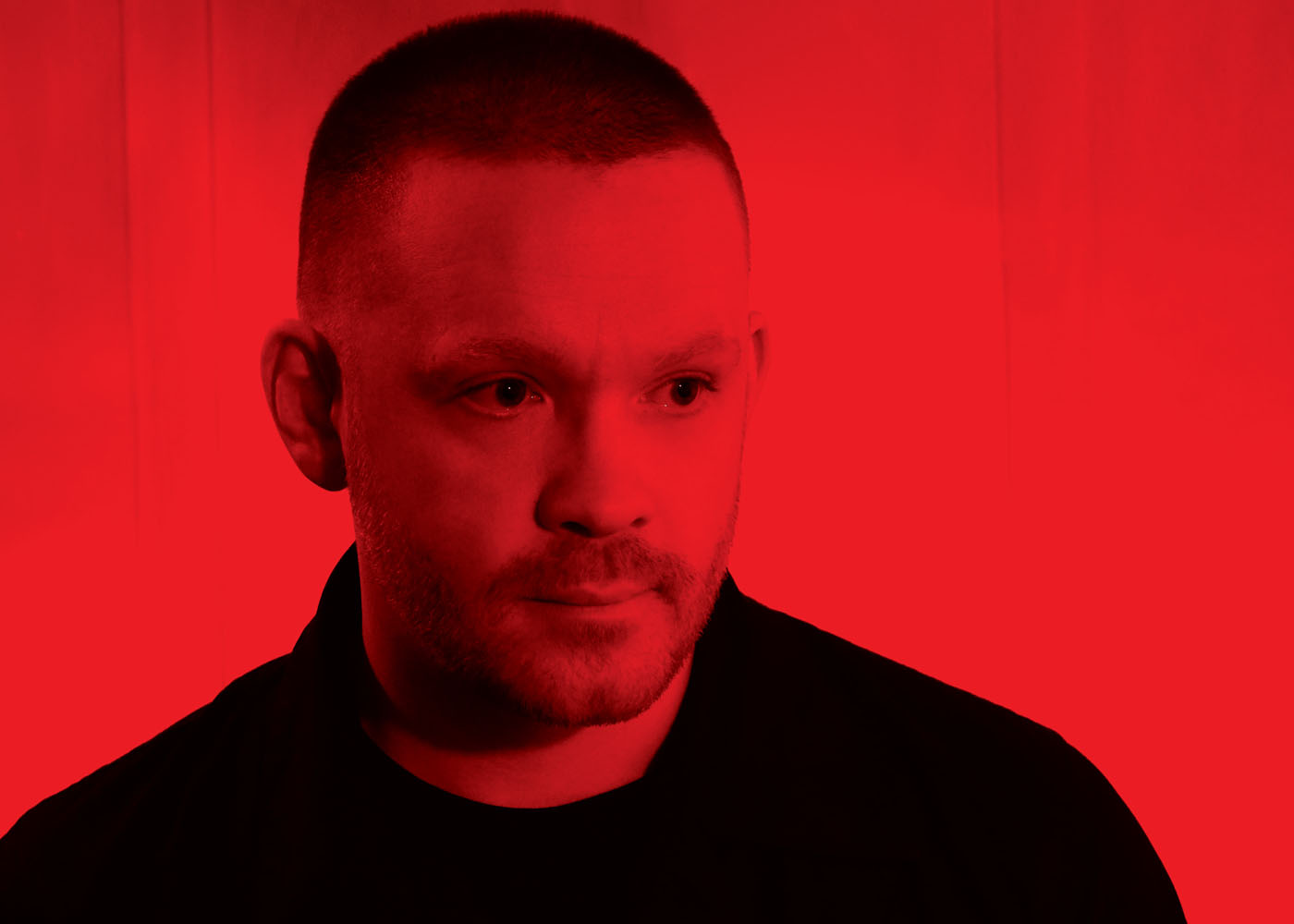
Presented during his first solo show at London Collections Men [now London Fashion Week Men’s], Green’s designs for SS15 marked a breakthrough moment for the fledgling brand. Combining close-fitting jersey separates with loose-fitting outerwear inspired in part by the martial arts, the show resembled a procession of silent warrior monks. Indeed, some participants carried sheets of fabric held up by wooden frames attached to their backs; they were perhaps the pacifists of the cavalcade, gliding down the runway, serene and mysterious.
The Week
Escape your echo chamber. Get the facts behind the news, plus analysis from multiple perspectives.

Sign up for The Week's Free Newsletters
From our morning news briefing to a weekly Good News Newsletter, get the best of The Week delivered directly to your inbox.
From our morning news briefing to a weekly Good News Newsletter, get the best of The Week delivered directly to your inbox.
“I was terrified that it was going to be the worst one we had done, because it felt really slow. We were trying to get the boys to walk faster,” says Green. “It turned out to be a good one in the end. We tripled sales that season from the seasons before, and that’s kind of where it started to change. We could start to build a team, we could work with factories. People wanted to work with us.”
Since launching his eponymous menswear line in 2012 – the year he graduated from Central Saint Martins with an MA in fashion – Green has set out to build an independent luxury brand with a difference. Striking a balance between the wearable and artistic, Green’s seasonal designs defy fast-changing trends. Today, Craig Green clothing and accessories, including a more everyday Core collection that revisits favourites from past collections, are stocked internationally, from Selfridges in London to Barney’s New York and the Galeries Lafayette in Paris. He has partnered with luxury sportswear brand Moncler on a capsule collection (2017), and his bi-annual shows command an international audience, with guests flying into London to see Green’s latest designs first-hand.
Despite helming such a young brand, Green can claim an unusual number of designs, details and fabrications as his trademark. There are his boxy workwear jackets, rendered in inch-wide quilted shell or cotton, which take their cue from a variety of sources: fencing gear, martial arts, spacesuits and medieval gambesons. His loosely cut outerwear features long strings and fabric ties that hang freely around the body like forgotten cables. Recently, Green has sewn small metal weights into the strings, inspired by builders’ lead plumb lines. “We are developing ways for them not to blow in the wind so much,” says Green. “Which was nice, but it’s a bit more ‘manga-ish’ when you’re walking down the road and you see your shadow flying away.”
The performative aspect of his designs has endeared Green to film and theatre producers and costumers. In 2016, British choreographer Wayne McGregor chose pieces from Green’s SS16 collection as dance costumes for his production of Obsidian Tear at The Royal Ballet. For Ridley Scott’s 2017 movie Alien: Covenant, Oscar-winning costume designer Janty Yates approached Green to design the cast’s combat wear – exaggerated military versions of his key AW15 pieces. Yates had fortuitously stumbled across the collection at Selfridges, where the label has proved so popular that it is stocked on both the men’s and womenswear floors.
A free daily email with the biggest news stories of the day – and the best features from TheWeek.com
Green has fans in the art world, too, including Swiss curator and historian Hans-Ulrich Obrist, artistic director of London’s Serpentine Galleries. “Craig Green is both visionary and pragmatic,” he says. “I’m blown away by his designs, which are not only an expression of craftsmanship, but also of true creative power. This is particularly evident in his capes, which at first glance look enormously solid, like a protective layer that envelops the wearer and keeps him or her grounded, but on the other hand are reminiscent of a flying carpet. That very visible contrast of traction and hovering is an oxymoron, as great art so often is.”
Obrist’s flying carpet analogy touches on the notion of solitary escapism: designs that mean something very personal to each wearer; an interesting contradiction given Green’s fascination with uniform and religious vestments, which are founded on the principles of a shared belief system. Indeed, the designer invariably refers to ‘we’ not ‘I’ when describing his work, hinting at a tight-knit team, while the idea of community plays a leading role in his designs.
In previous collections, Green has imagined a crew of submariners dressed in blue hooded cotton smocks (AW17) and rendered the practical details of hospital scrubs in ecru cotton (AW16). Loosely cut garments follow the ‘one-size- fits-all’ philosophy of workwear; Green’s signature laces allow the wearer to cinch the garment as they please.
In May 2016, Green, a recipient of the British Fashion Council’s NewGen talent scheme for six seasons starting with SS15, was awarded the BFC/GQ Designer Menswear Fund, which includes a cash prize of £150,000. He has also been a finalist of the 2015 LVMH Prize, and has been honoured with three Fashion Awards – the third came last December when he won British Menswear Designer of the Year for a second consecutive year.
In the space of just one year, Green’s team grew from three staff members to nine, seven of whom are employed full-time. Space became an issue; the brand recently moved from its premises in De Beauvoir Town, Hackney – part of the Sarabande studios, supported by the Lee Alexander McQueen Foundation – to a new purpose-built studio near London City Airport. “The view is of the Millennium Dome and the river; the sun sets over Canary Wharf. We’re hoping we’re ahead of the curve and not just off it,” he says, jokingly.
Green, 31, was born and raised in Hendon, north-west London. “Everyone goes to the same pub and knows each other,” he says. “I went to the same school as my granddad and my mum; I had the same English teacher my mum had. It’s almost a ‘small town within London’ mentality.” Both of Green’s parents wore uniforms for work: his father was a plumber, his mother a nurse. “There is something romantic he says. “Everyone goes out together. It’s very competitive and quick, but it’s also a community, which I liked.” Green was taught by the late Professor Louise Wilson. “I liked her approach and I liked her honesty,” he says of Wilson, whose former pupils also include designers Kim Jones, Christopher Kane and Hussein Chalayan. “I liked the way she pushed you to be uncomfortable, because it means you’re doing something new, rather than something you’ve done already. You should feel uncomfortable, because it’s a process.”
This is a philosophy to which Green still subscribes: “If it’s too easy, we try to twist it a bit more.” A case in point is his newly developed ‘cord and tunnel’ technique, which involves a dual layer of shirting fabric being stitched together to form tubes or ‘tunnels’, through which a woven sports cord is then fed by hand to achieve a folding effect, recalling corrugated cardboard. This technique demands up to 70 hours of work for printed fabrics.
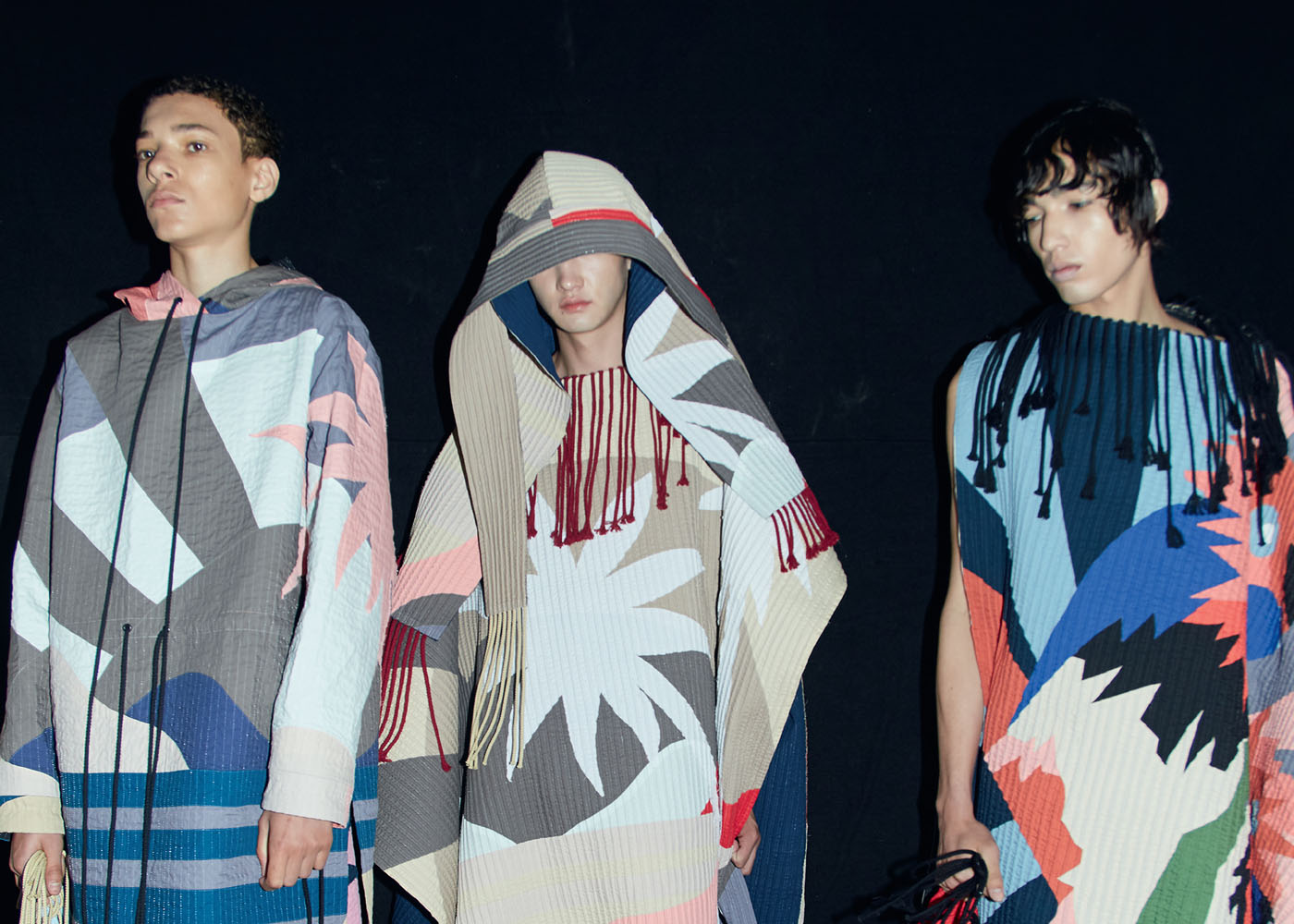
Back at their E16 studio, Green and his team plan new collections with absolute precision. His ready-to-wear shows are choreographed productions that follow their own idiosyncratic rhythm. “Every collection starts with that idea of uniform, or communal ways of dress,” he says. “Even the shows start with colour blocks on a wall, before we even have clothes. So we have five colours: five black, five another colour, five white...” Optical games using dominant contrasts have been part of Green’s design language from the get-go. For his debut catwalk collection as part of Lulu Kennedy’s Fashion East initiative, which supports emerging talent, he followed all-white outfits with identical garments cut from dark fabrics. “Every look was a shadow of the other one,” Green says of the collection, which famously featured arresting fence-like headgear over the models’ faces.
His AW15 collection further explored colour as a device for building a narrative, by using it as a kind of visual Morse Code: a light-dark-dark pattern with one model dressed in black and white, followed by two others in full shadowy looks. Between two sets of 15 models came a disruptive threesome dressed in bright red, like human high-alert signs. Photographs of the collection, taped against Green’s studio wall, formed an imagined flag with red at the centre.
His show locations, too, are selected with care. Last June, Green’s SS18 show (below and above) took place under the Victorian barrel vaults of London’s Southwark Arches. “I liked that it looked like a church, and also a bit like the London Dungeons, which I love. It was kind of like an underground tomb,” muses Green, a self-professed fan of horror movies. “It would be summer and quite hot, so I thought it would be nice to go in there and be a bit cold.” In 2017, Green launched a second Core collection, which reinterpreted past favourites. Far from a diffusion line, the Core collection sits harmoniously alongside his runway output, offering customers a ‘paraphrased’ version of his design philosophy and so allowing him to commercialise his label to greater effect without compromising his artistic sentiment. This spring, he has added a debut Japanese denim range to the Core collection, with raw blue, black and bleached renditions. Green’s straight-leg, five-pocket jeans feature flat seams worked by hand, sturdy orange stitching, and his signature punched and embroidered hole motif.
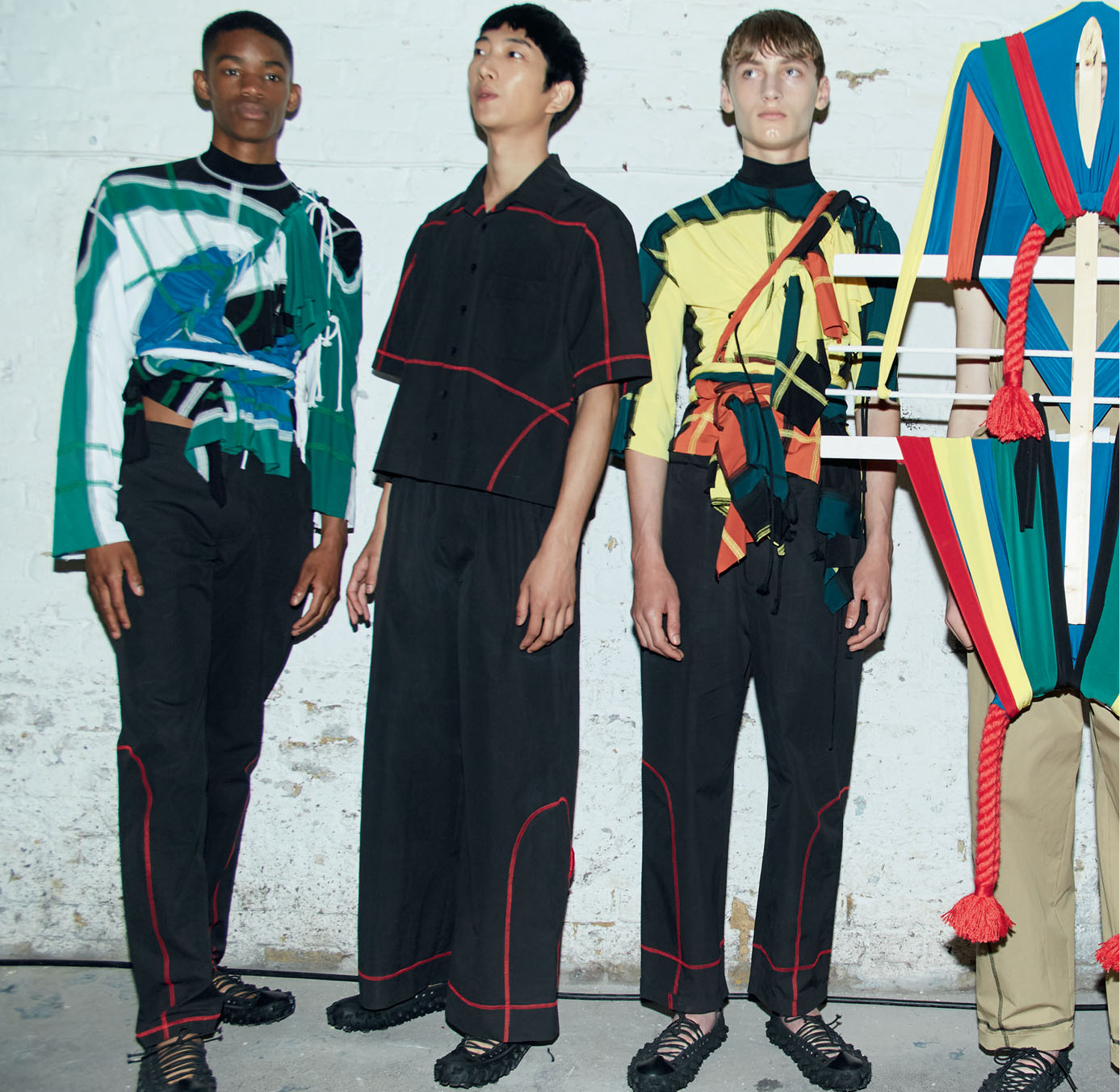
Initially, Green tasked a London factory with producing the line; today, he also calls on specialist manufacturers in Portugal and Italy. “Sometimes it’s good to design within parameters, because you have to problem solve, but now we’re starting to work with factories where you can dream up things,” he says. Last winter, Green designed a capsule collection with Italian specialist Moncler. “They can really do anything,” he says of the superbrand’s production sites. “It was eye-opening for us that that’s how things could be, because I’ve never worked anywhere else. I never really understood the level of possibility.”
While the blue octopus sculpture is safely stored away for posterity, Green is wisely spreading the tentacles of his brand. “That one was so fun to make,” he says, remembering his very own alien from the ocean. “They were the more arty days of the brand, when we had time to make big octopuses and things like that.”
-
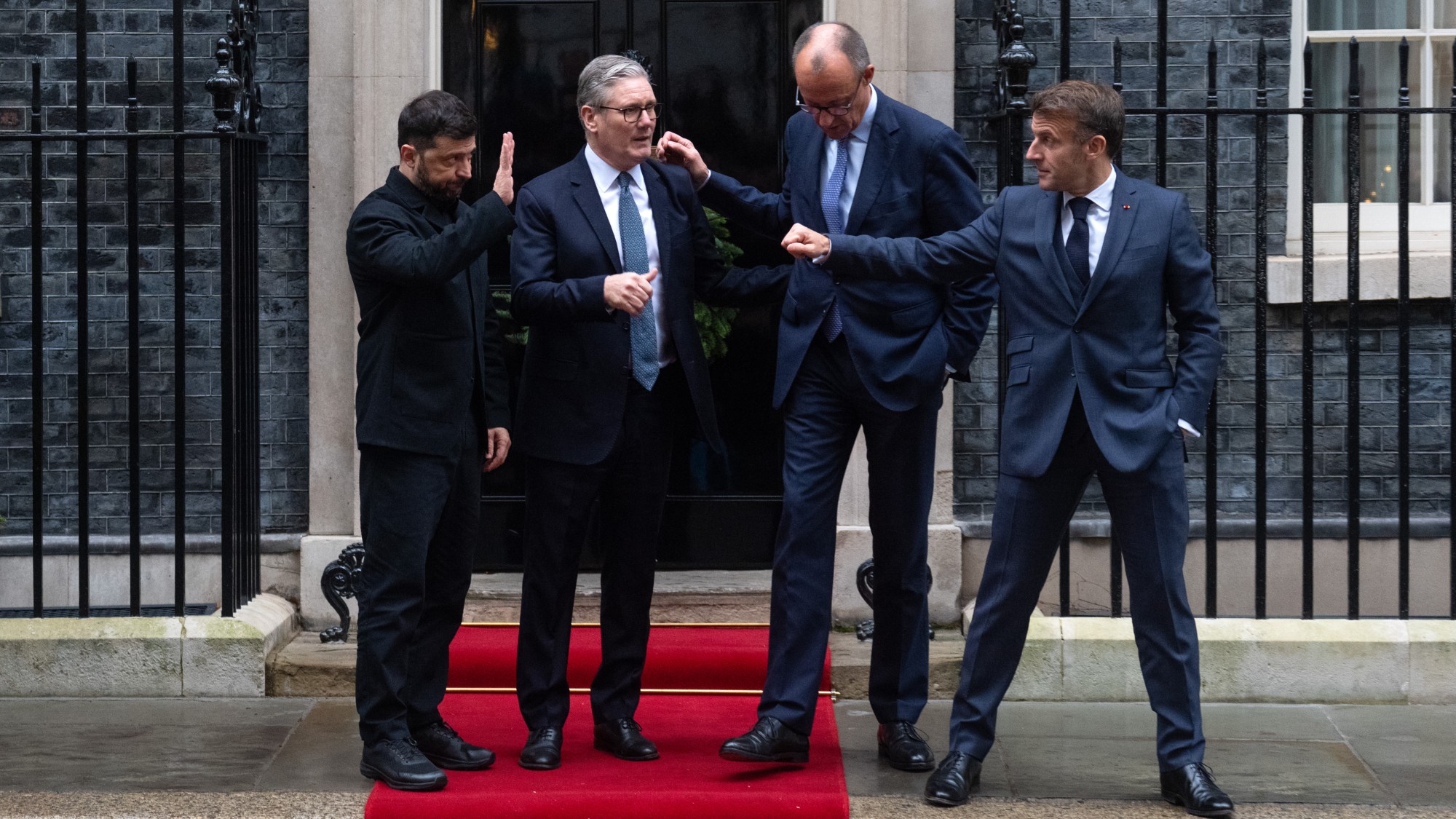 Will there be peace before Christmas in Ukraine?
Will there be peace before Christmas in Ukraine?Today's Big Question Discussions over the weekend could see a unified set of proposals from EU, UK and US to present to Moscow
-
 Quiz of The Week: 6 – 12 December
Quiz of The Week: 6 – 12 DecemberQuiz Have you been paying attention to The Week’s news?
-
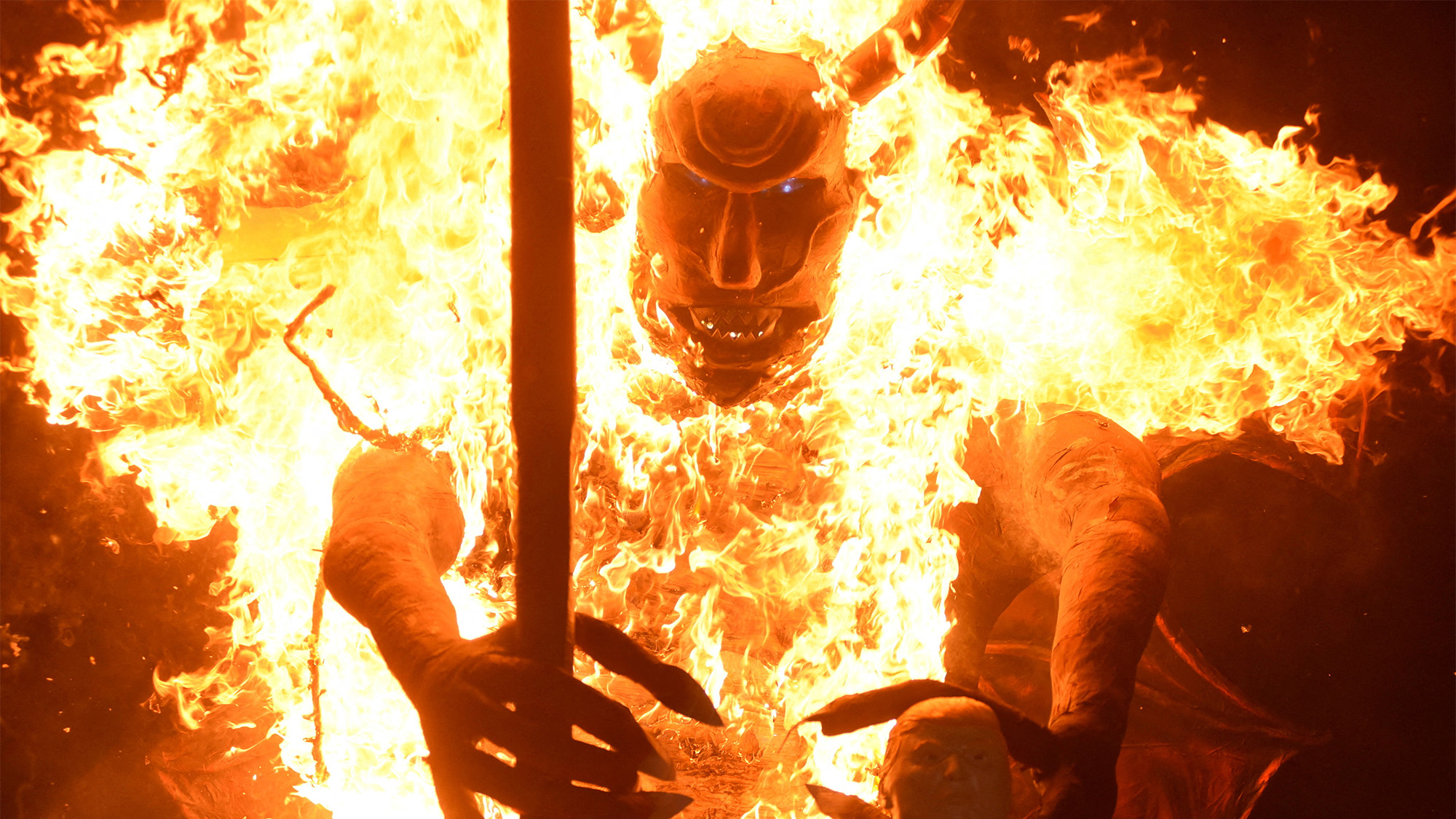 The week’s best photos
The week’s best photosIn Pictures A man's best friend, the elephants in the room, and more